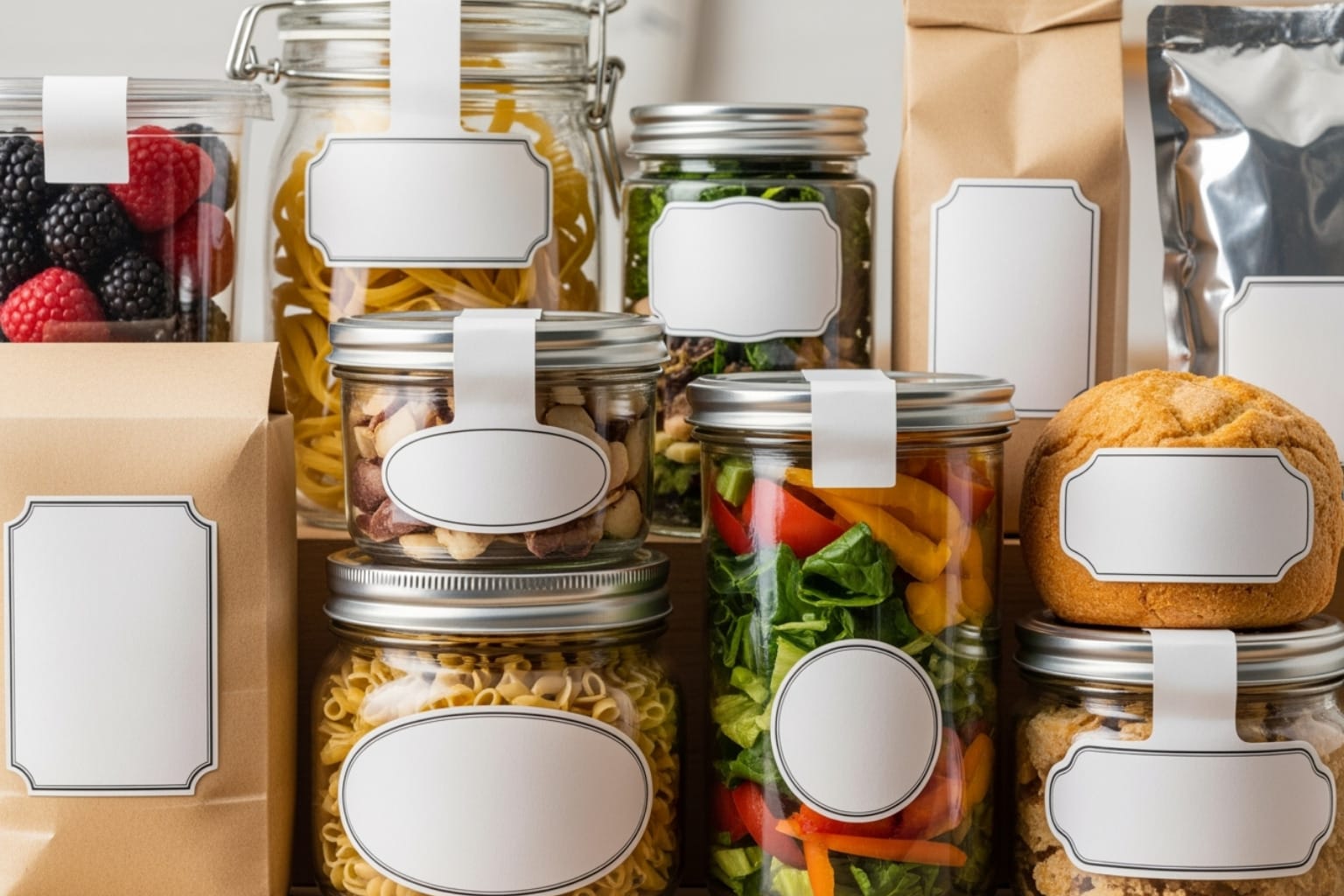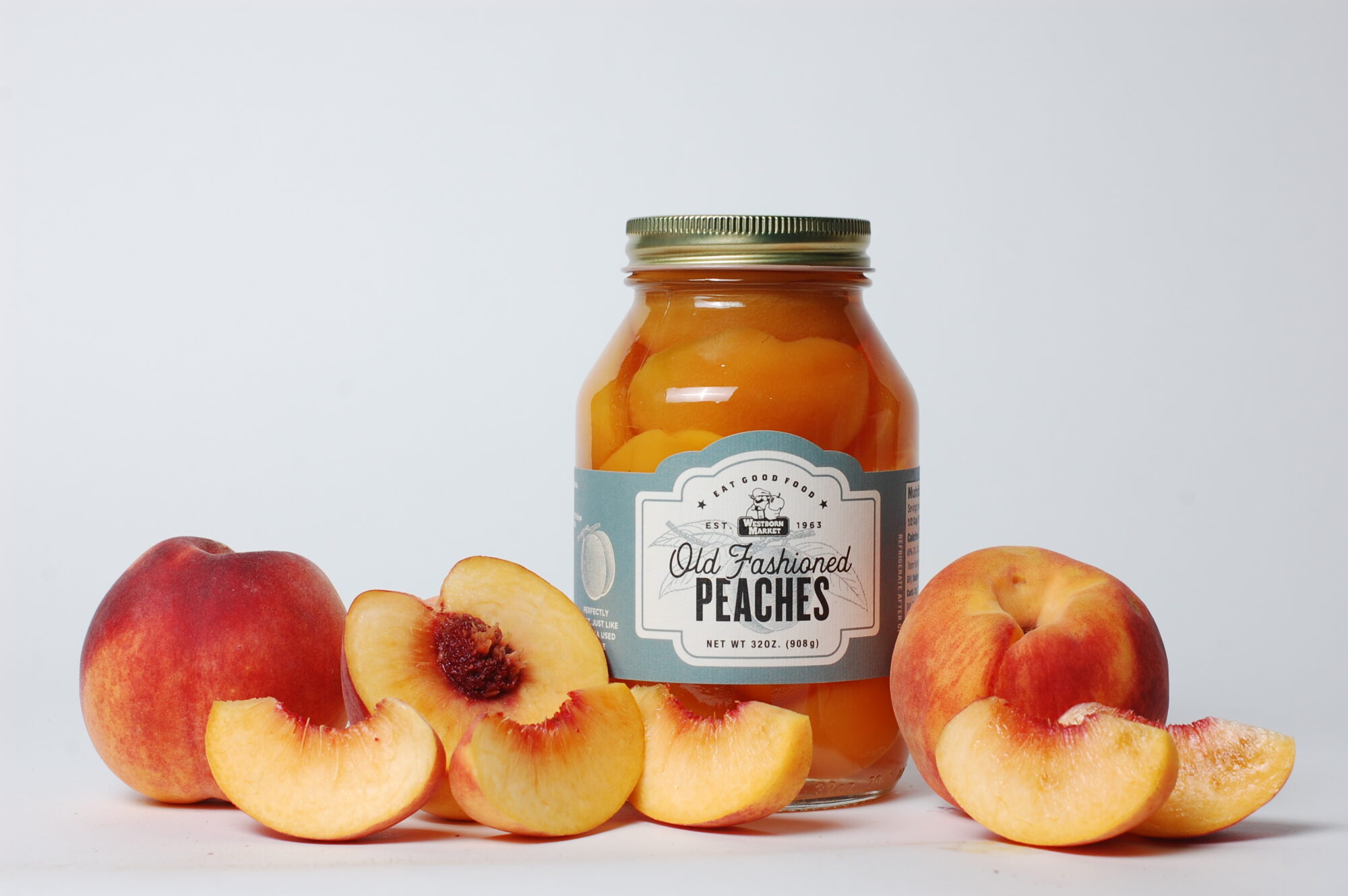Why Your Kitchen Needs a Labeling System

Food container labels are adhesive stickers designed to identify contents, dates, and storage instructions. They are essential tools for organizing kitchens, reducing food waste, and ensuring food safety by making it easy to track what’s stored and when it expires.
Quick Guide to Food Container Labels:
- Erasable labels: Reusable and dishwasher-safe, perfect for glass containers.
- Dissolvable labels: Water-soluble, leaving no residue, ideal for commercial kitchens.
- Permanent labels: Long-lasting adhesion, best for pantry storage.
- Freezer-safe labels: Withstand cold temperatures without peeling.
- Write-on labels: Accept ink from markers and pens for easy customization.
Whether you’re meal prepping or running a commercial kitchen, the right labeling system transforms chaos into order. A well-designed system creates accountability, helps track expiration dates, and ensures food safety. From busy parents to packaging managers, food container labels solve the universal problem of forgotten foods and mystery meals.
The ‘Why’ Behind Labeling: Safety, Savings, and Sanity
Food container labels are the unsung heroes of kitchen efficiency. They contribute to food safety, waste reduction, and financial savings.
First, food safety. A quick glance at a label tells you when food was prepared and when it should be consumed by, which is crucial for preventing foodborne illnesses. For commercial operations, this is tied to strict regulatory compliance, as outlined in the USDA’s guidelines on food product dating.
Next, reducing waste translates directly to financial savings. By labeling everything, you can see exactly what you have, preventing items from getting lost in the back of the refrigerator. When you use what you buy, you buy less, saving money on groceries.
Finally, kitchen efficiency. Labels make meal planning and prep smoother by helping you instantly identify ingredients. They also help manage food in shared spaces like office fridges, preventing mix-ups and making daily life easier.

Choosing Your Label: Types and Materials
The best food container label depends on your specific needs, whether reusability, durability, or ease of removal.
Different Types of Food Container Labels:
- Erasable Labels: Fantastic for frequently refilled items. They can be written on, wiped clean with a simple art eraser, and reused hundreds of times. Some can even withstand dishwasher cycles.
- Dissolvable Labels: A dream for kitchens where residue-free removal is key. When you’re done, simply run the container under water, and the label vanishes.
- Permanent Labels: Ideal for long-term storage, like preprinted pantry labels for flour, sugar, or spices.
- Freezer Labels: Specifically designed to withstand extreme cold without peeling or becoming brittle.
- Specialty Labels: These include durable, waterproof baby bottle labels to prevent mix-ups and decorative chalkboard labels for a rustic look.
Matching the Label to the Need
- Pantry Organization: For dry goods, permanent or chalkboard labels work well. Clear labels on glass jars create a beautiful, organized look.
- Freezer Storage: Freezer-safe labels are essential. They stick securely in sub-zero temperatures and resist moisture.
- Refrigerator Labels: For leftovers and meal prep, erasable or dissolvable labels are the go-to choice.
- Meal Prep Containers: Erasable labels are perfect for weekly meal prep. You can mark each meal and wipe the containers clean for the next week.
Understanding the conditions—temperature, moisture, and washing frequency—helps select the most effective food container labels for each purpose.
A Guide to Effective Food Container Labels
Once you’ve selected your labels, making them work effectively is key. The difference between a helpful label and a frustrating one comes down to the information you include and how you apply it.
Best Practices for Flawless Food Container Labels
For a truly useful label, include these four essentials: Contents (be specific: “Chicken Soup” is better than “Soup”), the date prepared or frozen, the use-by date, and any special instructions like “Spicy” or “Contains Nuts.”
The application process is just as important. Always apply labels to a clean and completely dry surface. Any grease or moisture will compromise the adhesive. Press the label down with firm pressure, paying special attention to the edges to ensure a strong bond. For writing, a fine-point permanent marker provides the best clarity. When it’s time to reuse an erasable label, a simple art eraser works wonders, removing ink without damaging the surface.
Following these Basic Fundamentals of Labeling ensures your food container labels remain legible and functional.
Commercial Food Container Labels
Branding and shelf appeal are where commercial labels shine. Your logo, colors, and design must grab attention and communicate your product’s quality. Barcodes and QR codes are also essential. Barcodes streamline inventory and sales, while QR codes can link customers to recipes or your brand story, creating an interactive experience.
Even small businesses selling at farmers’ markets need professional-looking labels to build trust. The complexity of commercial food container labels requires deep expertise in materials and printing to ensure they perform under various conditions while meeting all regulatory requirements.
Navigating Food Labeling Regulations
Regulatory compliance for commercial food container labels is not optional—it’s about consumer safety and avoiding costly penalties.
- FDA requirements dictate what information must appear on labels and how it should be presented (see the FDA’s Food Labeling Guide for full details).
- FALCPA (Food Allergen Labeling and Consumer Protection Act) requires clear identification of the eight most common food allergens.
- Nutrition Facts panels are governed by strict formatting rules, including mandatory declarations for calories and added sugars. Small businesses may qualify for exemptions, but it’s important to understand the guidelines.
- Ingredient lists must be complete and accurate, and state-specific cottage food laws may also apply.
The New Nutrition Facts Regulations 2020 introduced significant changes, highlighting the need to stay current. Partnering with a label provider who understands this complex landscape is essential for maintaining compliance and consumer trust.
